#Colegio de San Juan de Letran
Explore tagged Tumblr posts
Text
WHO IS : EMILIO AGUINALDO Y FAMY ?
The 1st Philippine President




EARLY LIFE
Born on March 22, 1869 in Cavite el Viejo to Carlos Aguinaldo y Jamir & Trinidad Famy y Villanueva, he was the 7th out of 8 children. His father was a gobernadorcillo. He studied at Colegio de San Juan de Letran, but could not finish his studies because of an outbreak of cholera in 1882. That makes him the 1st out of 3 presidents to not complete their studies. He became a cabeza de barangay in 1895 when the Maura Law called for the reorganization of local governments. At the age of 25, Aguinaldo became Cavite el Viejo's first gobernadorcillo capitan municipal while he was on a business trip in Mindoro.
FIRST PHILIPPINE REPUBLIC
The First Philippine Republic was formally established with the proclamation of the Malolos Constitution on January 21, 1899, in Malolos, Bulacan and endured until capture of Aguinaldo by the American forces on March 23, 1901, in Palanan, Isabela, which effectively dissolved the First Republic. Aguinaldo wrote in Tarlac during the First Republic the Tagalog manuscript of his autobiographical work, which would later be translated by Felipe Buencamino into Spanish and released as Reseña Veridica de la Revolucion Filipina.
DEATH
Aguinaldo was rushed to Veterans Memorial Medical Center (VMMC) in Quezon City on October 5, 1962, under the care of Dr. Juana Blanco Fernandez, where he stayed for 469 days. He died of coronary thrombosis on February 6, 1964, at 3:05 am PHT, one month before his 95th birthday. Although Aguinaldo had renounced his Roman Catholic faith when battling against Spanish rule, he reconciled with the Church and received the last rites from VMMC's Catholic chaplain. A year before his death, he had donated his lot and mansion to the government. The property now serves as a shrine to "perpetuate the spirit of the Revolution of 1896."
#macapagal#emilio aguinaldo#philippines#president#philippine history#i hope you all can understand my love for ap sorry
5 notes
·
View notes
Text
Intramuros, Manila
When visiting the Philippines, one should not forget to visit the walled city of Intramuros.
Known to be the settlement of the Spanish invaders for 333 years, this place have witnessed a lot of historical events of the country.
The most remarkable probably is the imprisonment site of the country's National Hero, José Rizal, in Fort Santiago.
The Intramuros Administration has established a museum dedicated to commemorate our National Hero. Here are some pictures I took when I visited the place with my boyfriend.
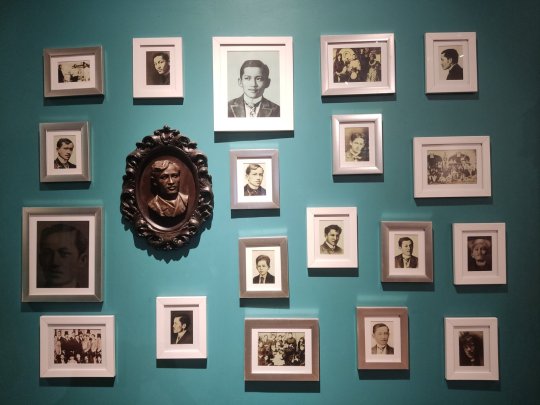
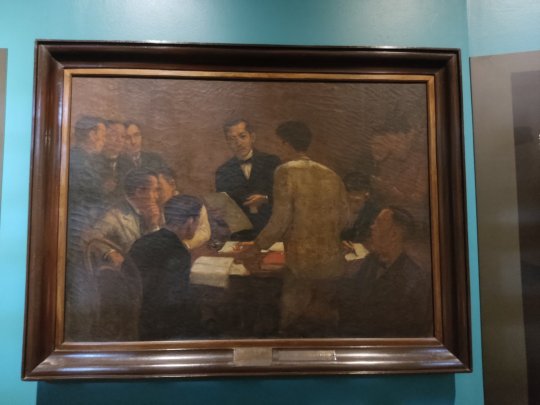
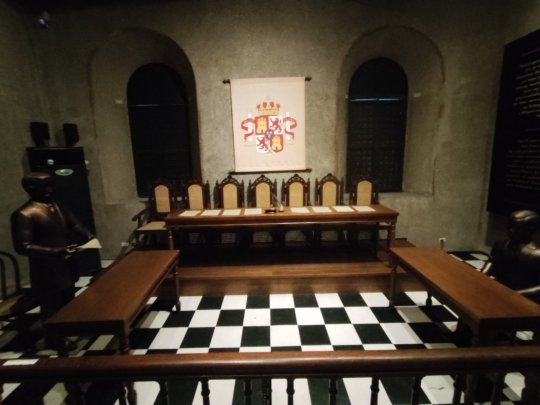
Of course, to make it worthwhile, we have also visited other historical structures like the Manila Cathedral and the San Agustin Church which are the only remaining out of the originally seven (7) churches that once stood within the walls.
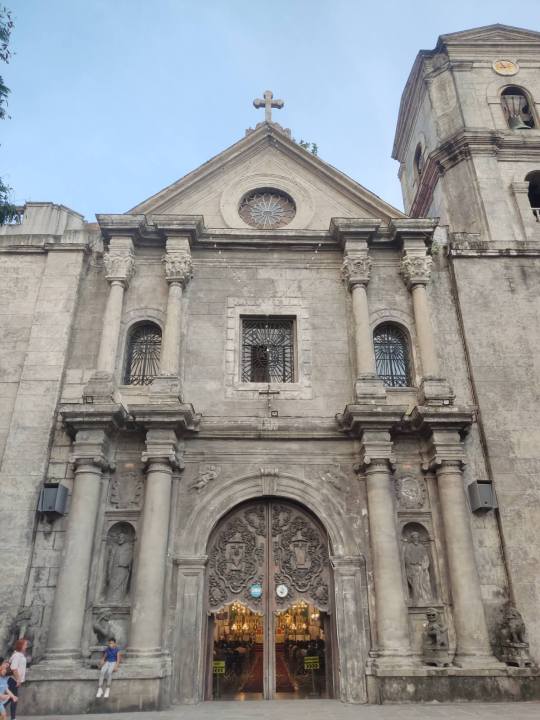
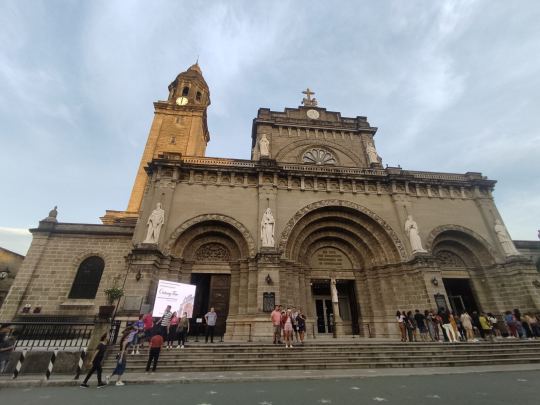
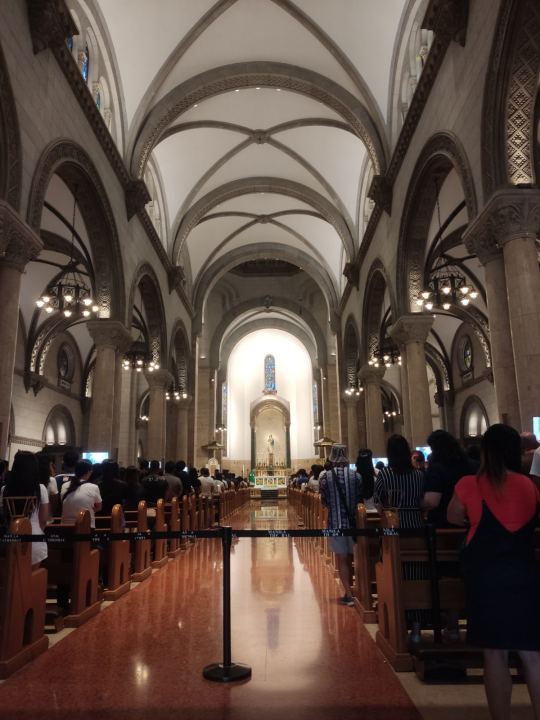
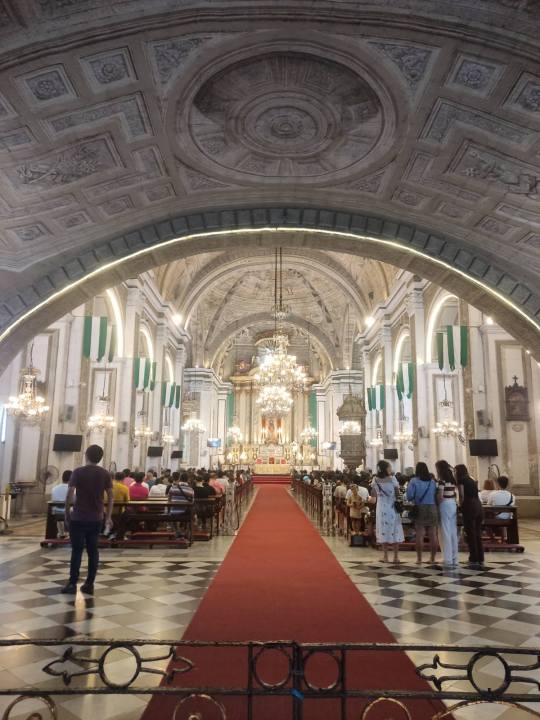
We have also walked on the walls and saw some of the known universities, Colegio de San Juan de Letran - the oldest college in the Philippines, and the Lyceum of the Philippines University - the only university founded by a Philippine president José Laurel.
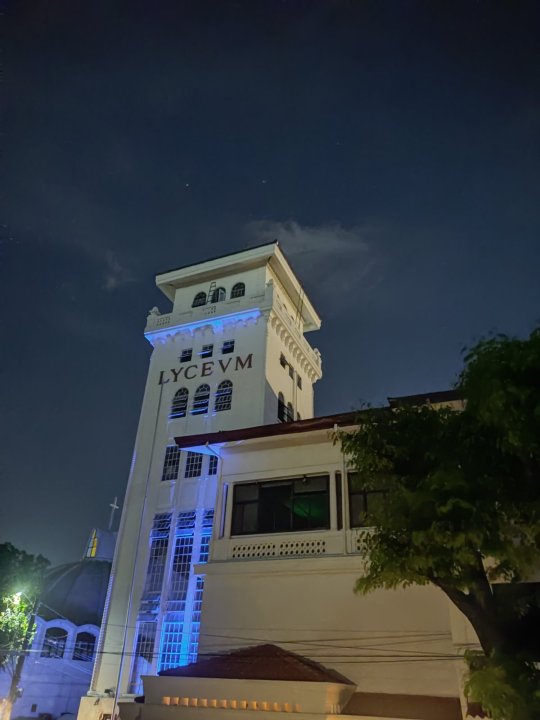
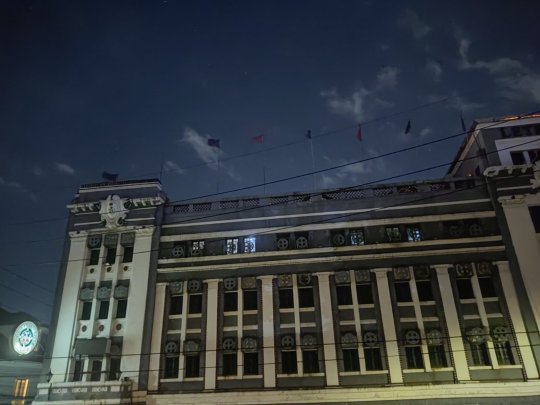
2 notes
·
View notes
Text

THE DESCRIPTION OF SAINT VICENTE LIEM DE LA PAZ (Vicente Liêm of Peace) Feast Day: November 7 (separate), November 24 (part of the Vietnamese Martyrs)
Vinh Sơn Phạm Hiếu Liêm, or Vicente Liêm de la Paz, was born at Trà Lũ village, in the phủ of Thiên Trường, Nam ��ịnh Province, Tonkin in 1732 to Christian parents, Antôn and Maria Doãn, members of the Tonkinese nobility.
When he fell gravely ill several days after his birth, he was baptised by Fr. Chien de Santo Tomas, taking the name of Vincent. He was later brought by his parents to a missionary centre where he learned catechism.
In 1738, King Philip V of Spain opened the Colegio de San Juan de Letran and the University of Santo Tomas (UST) in the Philippines to Chinese and Tonkinese students through a scholarship program. The Vicariate Apostolic of Eastern Tonkin, ran by Dominican friars at the time, decided to let Liêm and four other Tonkinese (Jose de Santo Tomas, Juan de Santo Domingo, Pedro Martir and Pedro de San Jacinto) study in the Philippines under this scholarship.
Vicente took the trivium and the quadrivium in Colegio de San Juan de Letran, now the equivalent of elementary and secondary education. He finished a degree of lector of humanities at Letran. He continued his collegiate education at the University of Santo Tomas while residing at Letran. In September 1753, after completing his studies at Letran, he entered the Dominican order, along with his three Tonkinese companions. A year later, they made their solemn professions.
On January 28, 1755, he received the tonsure and minor orders at the Church of Sta. Ana. Liêm was ordained priest under the Dominican order in 1758. On September of that year, he passed the examinations to hear confessions. On October 3, he started his journey back to his homeland and arrived on January 20, 1759.
Upon arriving in his homeland, he was appointed professor in Trung Linh seminary. On October 2, 1773, he and his two assistants were arrested at "Co Dou". He and his assistants were beaten up, after which they traveled on foot to the village of recorded as "Dou Hoi." There he met another Dominican priest, the Spaniard Jacinto Castañeda.
They were presented to the Vice Governor and to the Royal Minister. They were thrown to a cage for a night. The arrival of a High Minister prompted their transfer to Kien Nam, where the King held his court. While under detention, they still managed to preach Catholicism to the people. Later they were taken to Tan Cau, then to the house of Canh Thuy.
Finally, they were brought to the King where they were tried. Their trial led for the King to be angry and they were thrown to jail. After several days, the King brought down the guilty verdict with the penalty of beheading. The execution occurred on November 7, 1773.
After the execution, the Christians who were present at the site carried away the bodies of de la Paz and Castañeda, where they were laid to rest at the town of Trung Linh in Xuan Truong, Nam Định. Several more Christian missionaries were put to death by the Tonkinese authorities.
The process of beatification of de la Paz and Casteñeda, as well as other Dominican martyrs, was initiated through Vicar Apostolic Bishop Ignacio Delgado. They were beatified by Pope Pius X with his feast day on November 6th.
Pope St. John Paul II canonized the Dominican martyrs along with a total of 117 martyrs in total on June 19, 1988, with the feast day of the group (the Vietnamese Martyrs) on November 24th in the General Roman Calendar.
#random stuff#catholic#catholic saints#dominicans#order of preachers#vietnam#vinh sơn phạm hiếu liêm#vicente liem de la paz#vicente liêm of peace
0 notes
Text
OP-Siena community celebrates Foundress Day
by Andrei Cabigao, OD Staffer
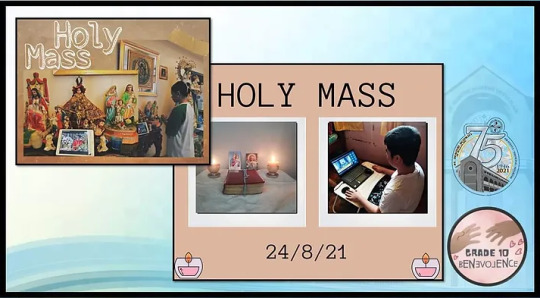
Two years in the pandemic, Dominicans from different OP-Siena Schools commemorate the death of Venerable Mo. Francisca Del Espiritu Santo de Fuentes, the foundress of the Congregation of Dominican Sisters of St. Catherine of Siena though virtually as they reminisce her works of charity for the sick, the poor, and the young.
As the CL/VE area led the opening salvo with Mr. Gerald Simbogan and Mr. Jayson Abuya as hosts, a simultaneous wreath-laying ceremony happened at Colegio de San Juan de Letran, Manila where Venerable Francisca's tomb lies.
Back here in school, Mr. Abuya and Mr. Simbogan facilitated a quiz bee on the life and virtues of Ven. Francisca via Kahoot in which Patricia Nicole Zafe of 12-Justice won the first place, Mel Christian Verona of 11-Sincerity clinched as second, and Jana Micyla Sarmiento of 10-Benevolence placed third.
“I had fun! [Hindi] ako aware sa [mga] mechanics kaya I went with the flow na lang the whole time," Zafe said in an interview with OD.
She also shared her journey from the start up to the virtual podium.
“But as I recalled what I reviewed last night and what we watched before the quiz bee, which was about the life of Mo. Francisca, it somehow inspired na hindi pa naman tapos, ang dami pang puwedeng mangyari so kaya pa ‘yan," she added.
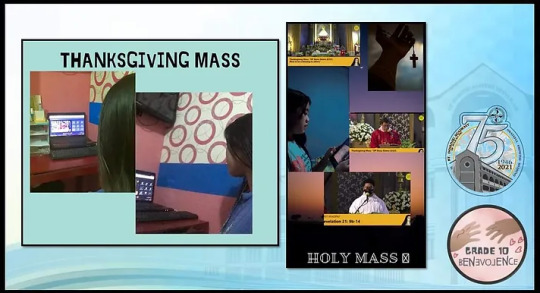
Afterwards, Fr. Filemon Dela Cruz, Jr., O.P presided a thanksgiving mass held at the National Shrine of Our Lady of the Holy Rosary in Quezon City.
Fr. Dela Cruz, OP. reminded about the real purpose of commemorating one’s death - it is to continuously inspire others to be "venerable", and manifest the virtues Mo. Francisca lived by.
“Inspiration is something that can move you, something that can guide you...That is what Mother Francisca is for all of us,” he shared during his homily.

Finally in her closing remarks, Mo. Ma. Sofia Taguinod, O.P., the Prioress General of the Congregation, gave her words of gratitude to all Dominicans, faithful believers, and people who contributed to the successful virtual celebration for Venerable Mo. Francisca and continuously wishes for uniting everyone’s heart, mind, and soul.#
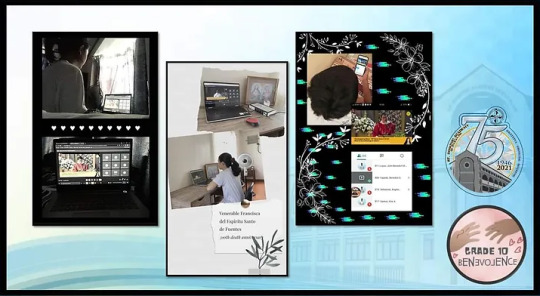
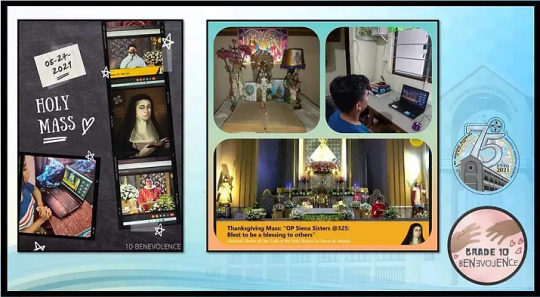
photos courtesy of Mr. Erwin J. Calilap, School Paper Adviser (English) and students from Grade 10 Benevolence
0 notes
Text
PHOTO ESSAY

June 1, 2023 (Thursday) our school Trece Martires City College decided to conduct an educational tour for all the 1st and 2nd year students of Education Department.
On the said date I suddenly woke up when the alarm clock went off at 5am. We prepared early because our call time is at 6 am in the morning and it takes 2 hours to get to our first destination.
We just slept, ate and talk with our tour guide kuya Ivan on our way, and when we go in there it was 8 am, we went straight to our first destination which is MUSEO EL DEPOSITO it is a historical museum in the city of San Juan in Metro Manila that features The Carriedo water system, including the El Deposito underwater reservoir. It's kinda smelly underground that's why we didn't stay there for a long.
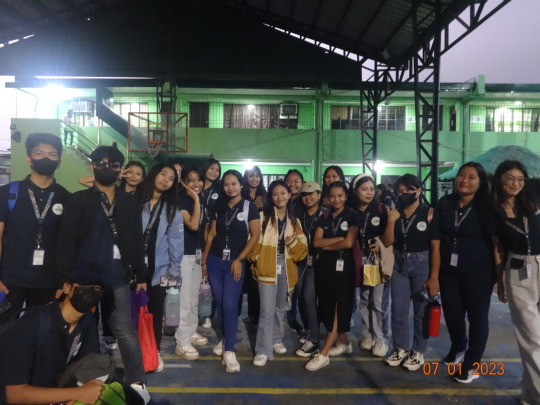
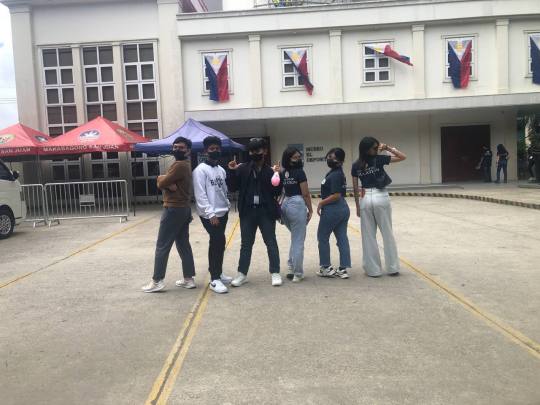

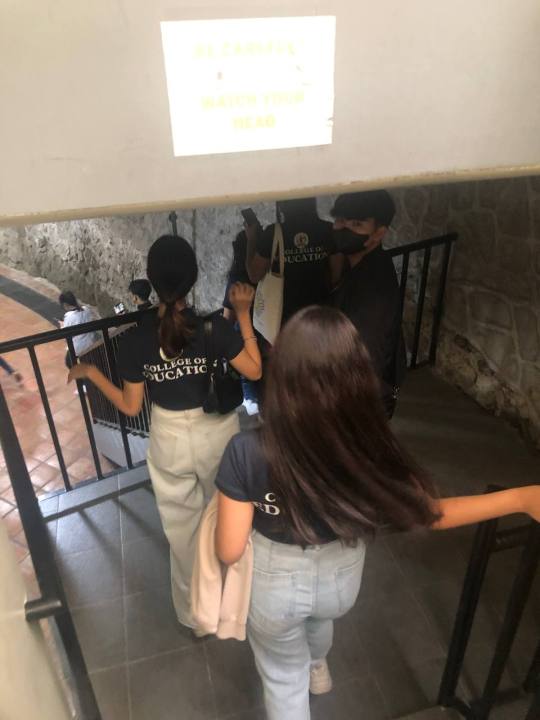
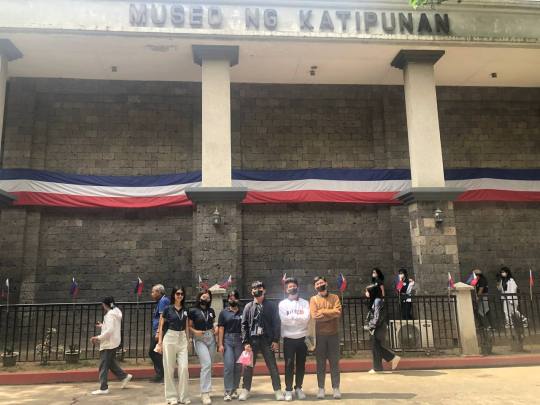
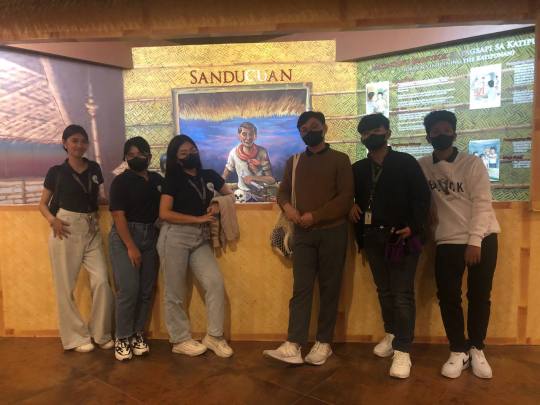

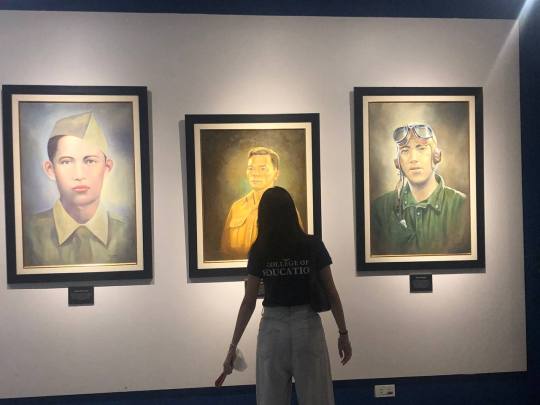
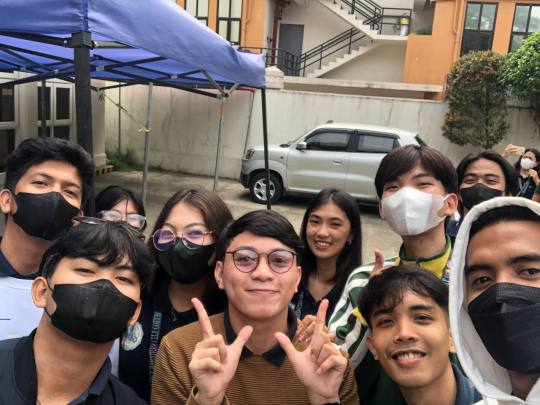
There was also The Museo ng katipunan that features artifacts which relate to the Philippine Revolution and The Katipunan. As I enter the museum I was mesmerized seeing the documents such as cedulas, oaths, membership forms, as well as medals, anting-anting and weapons used by the Katipunan. It has three galleries namely: The Audio-Visual Room, Resource Center, and The Virtual Reality Room. The audiovisual room narrates the period prior to the establishment of The Carriedo Waterworks in 1882, The Resource Center features artifacts, photographs, prints and scale models, while The Virtual Reality room provides a re-enactment of the Battle of San Juan del Monte to the museum visitors. The museum is situated within the grounds of the Pinaglabanan Shrine. The structure and everything you will see there is so beautiful and also the staffs are very accommodating as we enter the building.

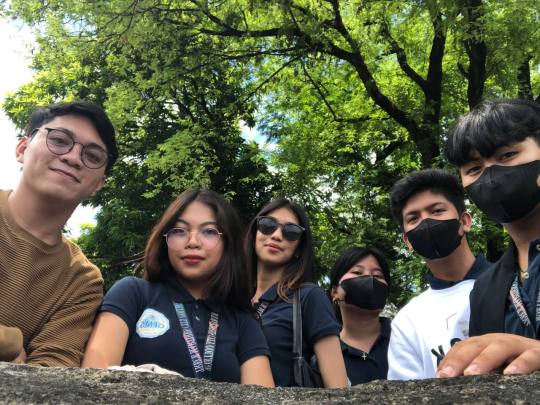
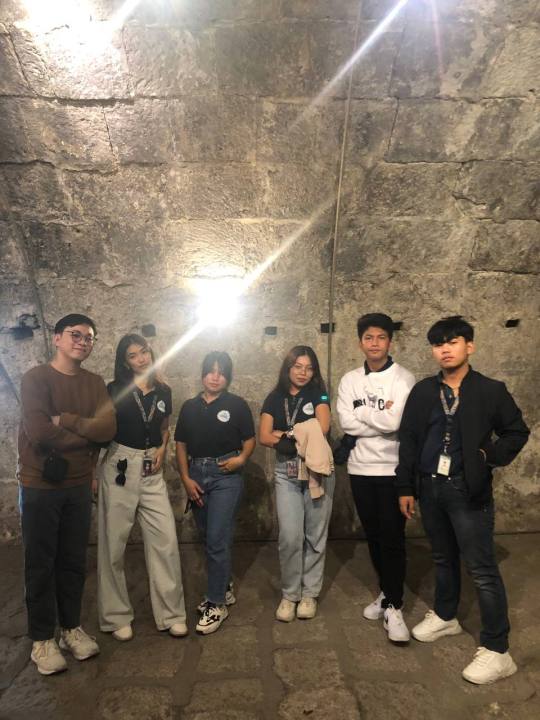
Our second destination is a place where we can see the beauty of Intramuros it is The Baluarte De San Diego and The fort Santiago. Fun fact did you know that Intramuros is also called as a "walled city"? in the reason of its mainly built as a defensive curtain to defend the occupant from outside aggression and It has a compressed gauze-like system of streets and a central square surrounded by government offices.
At this point in time were we are in the 21st century intramuros is now a well-maintained park and popular tourist destination that has a fast food restaurants and shops catering mostly to the student population within Intramuros.
There are also other places that you must see when you go in Intramuros such as...
Schools ( Colegio de San Juan de Letran, Colegio de Santa Rosa, Lyceum of the Philippines University etc )
Churches ( Manila Cathedral, San Agustin Church, San Ignacio Church, Guadalupe Shrine in Fort Santiago etc )
Monuments and Statues
12 in the afternoon it was lunch time while looking for a place to eat we only have an hour to had a lunch because our last spot is on star city. Our bus decided to park at Harbour Square then we found out that there's a Jollibee Fast food restaurant. so me and my friends decided to bring our packed lunch and eat there while looking at the refershing view of Manila Bay.


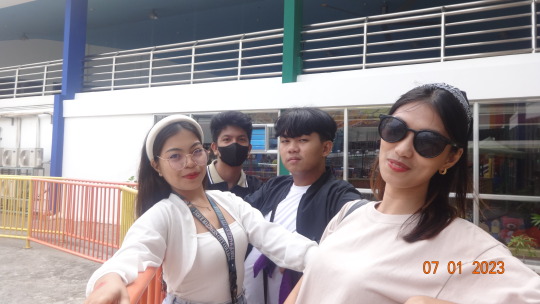
For our last and final destination, after we had our lunch we headed quickly inside the Star City so that no time will waste. As you enter the Star City you will first see the stall selling of souvenir items like stuff toys, T-shirts ,candies, toys etc. In this amusement park you will enjoy for the reason that there are 25 various types of rides and attractions that worth what you paid for though we didnt have much picture inside the park because other than the fact that we enjoy the rides we only had 4 hours to stay but in the end of the day we still seize the moment.




The first thing I noticed about intramuros is that you really need a lot of energy to walk around and you must have a bottle of water with you to avoid dehydration.
Even though the time I spend there was limited, I still enjoyed it and learned a lot of things regarding our own history, nothing can replace the warmth feeling that I felt during our educational trip so you guys should try to visit Intramuros and Star City I can vouch for the authencity of it, it was a good call indeed that you won't regret coming there, I was hoping I could visit Intramuros again but with my family.
0 notes
Text
PERIOD OF PHILIPPINE LITERATURE IN ENGLISH
TWO REMARKABLE WRITERS
1. Fernando Ma. Guerrero

Biography: Fernando María Guerrero Ramírez was a Spanish Filipino, poet, journalist, lawyer, politician, and polyglot who became a significant figure during the Philippines' golden period of Spanish literature, a period ranging from 1890 to the outbreak of World War II in 1940. He was born on May 30, 1873 and he died on June 12, 1929.
Contribution: He was a member of the First Philippine Assembly representing Manila's 2nd district, the Academia Filipina (Philippine Academy) and also became a leader of the Municipal Board of Manila. He was also a correspondent to the Royal Academy of the Spanish Language in Madrid. His poetry book Crisálidas was published in 1914.
2. Manuel H. Bernabe

Biography: A poet, linguist, and politician, Manuel Bernabe was born on February 17, 1890 to Timoteo Bernabe and Emilia Hernandez of Paranaque, Rizal.
He studied at the Ateneo de Manila where he finished his Bachelor of Arts degree with high academic standing. In 1910, Manuel's first paem was published in the Renacimiento Filipino. In 1912, he translated Virgil's Aenid from Latin to Spanish. In 1913, he received an award for his poems The Hymn to the Sacred Heart of Jesus, El Zapote, and España en Filipinas.
Contribution: He taught Spanish in different schools such as: Far Eastern University, Philippine Law School and Institute de Espanol at Colegio de San Juan de Letran. In 1951, he accompanied President Elpidio Quirino on the latter’s state visit to Spain. He joined the world of politics, as a representative to Congress of the first district of Rizal.
References:
Retrieved from http://geocitiessites.com/sinupan/BernabeM.htm
Retrieved from https://www.wikipedia.org/
1 note
·
View note
Text
2 Remarkable Filipino
PRE-SPANISH PERIOD
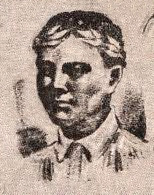
Credit: wikipedia.org
Pedro Bukaneg (March 1592 – c. 1630}
Was a Filipino poet. He is considered the "Father of Ilocano literature." Blind since birth, he is the believed to have authored of parts of the Ilocano epic Biag ni Lam-ang (Life of Lam-ang).
Being a romanticist, he composed poems and songs which were so tenderly sweet that he gained fame among the Ilokano masses as a gifted troubadour. Bukaneg was good not only in poetry but also in oratory.
Pedro Bukaneg was a Filipino poet. He is considered the "Father of Ilocano literature." Blind since birth, he is the believed to have authored of parts of the Ilocano epic Biag ni Lam-ang. A street inside the Cultural Center of the Philippines complex in Pasay, Philippines is named in his honor.
Born: March 1592, Bantay
Died: 1630

Credit:filipinaslibrary.org
Nicanor Abelardo
Kundiman
A composer of over 140 works that included sonatas, concerti and chamber music, Abelardo is best known for elevating the Philippine genre of the Kundiman into a western art-song form.
The Violin Sonata (1931) by Abelardo is a composition for violin and piano that does not fit the characteristics most associated with Philippine music, particularly the Kundiman that Abelardo is best known for during that time period.
Nicanor Santa Ana Abelardo was a Filipino composer known for kundiman songs he wrote before the Second World War.
Born: February 7, 1893, San Miguel
Died: March 21, 1934, Intramuros, Manila
Awards: Awit Award for Best Traditional Recording
Parents: Placida Sta. Ana, Valentine Abelardo
Genres: Kundiman; classical music
SPANISH PERIOD [1521-1871]

Credit: wikipedia.org
Antonio Abad
Antonio M. Abad (1894-1970) was a poet, playwright, essayist and novelist born in Barili (Cebu) and is frequently referred to as “The Greatest Hispanic Filipino Novelist after Rizal”. In 1927, he published his first novel El Último Romantic.
Antonio Abad y Mercado was a prominent Filipino poet, fictionist, playwright, and essayist.
Born: May 10, 1894, Barili
Died: April 20, 1970
Books: Magda: A Three-act Play
Education: University of San Carlos - Talamban Campus
Language: Cebuano, Spanish
Notable awards: Premio Zóbel, Premio Literario Filipino de la Mancomunidad
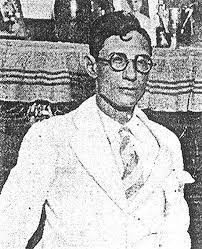
Credit: alchetron.com
Jesus Balmori
He wrote three novels: Bancarrota de Almas (Failure of the Soul), Se Deshojó la Flor (I Tear The Pages Out of The Flower), and Pájaros de Fuego (Birds of Fire) which was completed during the Japanese occupation.
Born: January 10, 1887, Ermita, Manila
Died: May 23, 1948, Mexico City, Mexico
Books: Birds of Fire: A Filipino War Novel
Education: University of Santo Tomas (UST), Colegio de San Juan de Letran
Language: Spanish
PERIOD OF ENLIGHTENMENT(1872-1898)
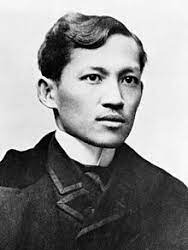
Credit: tatlerasia.com
José Protasio Rizal Mercado y Alonso Realonda
He was a prolific poet, essayist, and novelist whose most famous works were his two novels, Noli Me Tángere (1887) and its sequel, El filibusterismo (1891).
José Protasio Rizal Mercado y Alonso Realonda was a Filipino nationalist, writer and polymath active at the end of the Spanish colonial period of the Philippines. He is considered the national hero of the Philippines.
Born: June 19, 1861, Calamba
Died: December 30, 1896, Rizal Park, Manila
Full name: José Protacio Rizal Mercado y Alonso Realonda
Siblings: Paciano Rizal, Saturnina Hidalgo, Concepción Mercado, MORE
Parents: Teodora Alonso Realonda, Francisco Mercado, Francisco Rizal
Spouse: Josephine Bracken (m. 1896–1896)

Credit: bayaniart.com
Marcelo Hilario del Pilar y Gatmaitán
Also known by his pen name Plaridel, was a Filipino writer, lawyer, journalist, and freemason. In 1882 Del Pilar founded the newspaper Diariong Tagalog to propagate democratic liberal ideas among farmers and peasants. In 1888 he defended José Rizal's polemical writings by issuing a pamphlet against a priest's attack, exhibiting his deadly wit and savage ridicule of clerical follies.
Marcelo H. Del Pilar is the most famous journalist in our history and is also considered as the father of Philippine journalism . His contributions as a lawyer, revolutionary, and propagandist emulates his patriotism, bravery, and intelligence.
Born: August 30, 1850, Bulacan
Died: July 4, 1896, Old Hospital de la Santa Creu, Barcelona, Spain
Nickname: Plaridel
Siblings: Toribio H. del Pilar, Fernando del Pilar, Valentín del Pilar, MORE
Children: Anita H. del Pilar de Marasigan, MORE
Parents: Blasa Gatmaitán, Julián Hilario del Pilar
THE AMERICAN REGIME (1898-1944)

Credit: alchetron.com
Adelina Guerrea
Adelina Guerrea was the first woman poet in the Philippines who was good in Spanish. She obtained the Zobel prize in her song El Nido . (The Nest).
Occupation writer, journalist, poet, playwright, historian, linguist Alma mater Santa Scholastica de Manilla
Died April 29, 1971, Madrid, Spain
María Adelaida Gurrea Monasterio (La Carlota, Negros Occidental, Philippines, September 27, 1896–Madrid, April 29, 1971) was a Philippine journalist, poet and playwright in Spanish.

Credit: peoplepill.com
Macario Adriatico
(10 Marso 1869-14 Abril 1919)
Macario Adriatico wrote of a legend of Mindoro entitle La Punta de Salto (The Place of Origin).
Born: March 10, 1869
Died: April 14, 1919
Scholar, journalist, and politician; known as the “Father of Manila’s City Charter
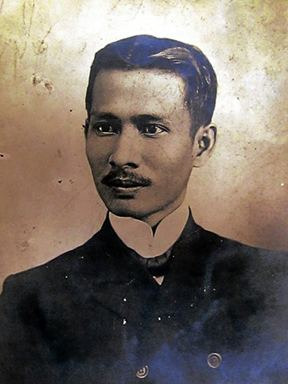
Credit: alchetron.com
Fernando Ma. Guerrero
The king of Balagtasan. His poetry book Crisálidas was published in 1914. Subsequently, he published another verse compilation called Ayes y Flores. Guerrero died on June 12, 1929, coinciding with that year's anniversary of the República Filipina (Philippine Republic). A school in Paco, Manila, was named after him in his honor.
Guerrero was the major lyric poet before and after the revolution, until the introduction of English literature in our schools. Known as the “Prince of Filipino lyric poets” in Spanish, he also played the flute and guitar. In Spanish lyric poetry, he was unsurpassed by his contemporaries.
Born: May 30, 1873, Manila
Died: June 12, 1929, Philippines
Full name: Fernando María Guerrero Ramírez
Children: Evangelina Guerrero Entrala
Education: University of Santo Tomas (UST), Ateneo de Manila University
Nationality: Philippine
Previous office: Member of the Philippine Assembly (1907–1909)
0 notes
Text
2 REMARKABLE WRITERS IN DIFFERENT PERIODS:
The American Regime
Patricio Mariano

Source Image:
Patricio Mariano y Geronimo (17 March 1877 at Santa Cruz, Manila – 28 January 1935) was a Filipino nationalist, revolutionary, pundit, poet, playwright, dramatist, short story writer, novelist, journalist, violinist, and painter. Mariano was a Katipunan member. Mariano was the son of Petronilo Mariano and Dionisia Geronimo.
Source:
Severino Reyes

Source Image:
Severino Reyes was born to Rufino Reyes and Andrea Rivera on February 11, 1861, in Santa Cruz, Manila, during the Spanish colonial era. He had his early schooling at a Catalino Sanchez-owned facility and completed his undergraduate studies at the Escuela de Segunda Enseanza of the Colegio de San Juan de Letran. He pursued a degree in philosophy at the University of Santo Tomas as well. In his career, Reyes penned 26 zarzuelas and 22 dramas. Both the "Father of the Tagalog Zarzuela" and the "Father of Tagalog Plays" are titles he holds.
Source:
0 notes
Text
The Life and Everything we didn't know about Dr. Jose Rizal

Introduction
José Rizal (1861-1896) was a national hero of the Philippines and the first Asian nationalist. He expressed the growing national consciousness of many Filipinos who opposed Spanish colonial tyranny and aspired to attain democratic rights.
José Rizal was born in Calamba, Laguna, on June 19, 1861, to a well-to-do family. He studied at the Jesuit Ateneo Municipal in Manila and won many literary honors and prizes. He obtained a Bachelor of Arts degree with the highest honors in 1877. For a time, he studied at the University of Santo Tomas, and in 1882 he left for Spain to enter the Central University of Madrid, where he completed his medical and humanistic studies.
Without a doubt, Jose P. Rizal is one of the most admired Filipino figures in Philippine history for his heroic acts. In this blog, get to know this brave young man and how he shaped history with the works of Rizal.
WHO IS JOSE RIZAL?
Dr. Jose Rizal is a man of many things—a patriot, physician, writer, inspiration, and a Philippine hero. He was born in Calamba, Laguna to Teodora Alonso Realonda and Francisco Mercado. Jose Rizal’s birthday is June 19, 1861.

Laong Laan
The pen name of Jose Rizal when he was a contributor of poems and articles for the Spanish newspaper “La Solidaridad” was Laong Laan. It was the name of a railway station in Manila and goes by the meaning “ever-ready”.
La Solidaridad was an organization created in Spain composed of Filipino liberals exiled in 1872 and students attending Europe’s universities and issued a newspaper of the same name published in Barcelona, Spain.
Aside from Doc Jose Rizal, others who contributed to La Solidaridad and used pen names were Marcelo H. del Pilar (Plaridel), Mario Ponce (Naning, Kalipulo or Tigbalang), Antonio Luna (Taga Ilog) and Jose Maria Panganiban (Jomapa).
Dimasalang
Dimasalang, on the other hand, was also the pen name of Jose Rizal. When he served as a correspondent of the same Spanish newspaper La Solidaridad, the full name of Jose Rizal was not used. Dimasalang means “untouchable.”
May Pagasa
When Doc Jose Rizal transferred to Madrid and became a member of Freemasonry, he used the pseudonym “May Pagasa” which means “there is hope.”
Jose Rizal Birthday
The birthday of Jose Rizal is June 19, 1861. This year is his 160th birth anniversary. The birthplace of Jose Rizal is in Calamba, Laguna.
Biography of Jose Rizal

Complete Name of Rizal: José Protasio Rizal Mercado y Alonso Realonda Rizal Bday: June 19, 1861 Hometown: Calamba, Laguna
From the José Rizal education to the works of Jose Rizal, you can learn it all here (and everything you probably don’t know yet about the Philippine hero) in this biography of Jose Rizal.
The Young Rizal Life
Born to an affluent family with Doña Teodora Alonso Realonda and Don Francisco Mercado being his parents, Jose P Rizal grew up in what was said to be the first stone house in Calamba, Laguna. They were also the ones first to own a piano, a home library, and stables and carriage. Their family, the Mercados, were among the richest in Calamba.
According to experts, Rizal’s boyhood is typical, like other kids his age. From telling stories of his crushes to experiencing beatings, Rizal was like any other boy. Except for the fact that he was really a bright young kid. Jose Rizal’s education started at home with his mom and aunt as his first teachers. His early studies also started with his teacher Justiniano Aquino Cruz. He learned the alphabet from his mother at the age of 3 and could read and write at age 5.


At the age of 11, he entered the Ateneo school then located at the Intramuros in Manila, and he was initially denied entry. But with their family’s connections, Doc Jose Rizal was allowed to study at the premier school despite knowing very little Spanish. During José Rizal's education at the Ateneo, he felt isolated because most of his classmates were mestizos and he was a dark-skinned Filipino boy.
As time passed, Rizal’s life in Ateneo became more bearable. He rose through the ranks, being one of the top-performing students. He excelled in every subject he took. He was, indeed, a bright young boy.
To grant his father’s request, Rizal took the entrance examination in Colegio de San Juan de Letran but then enrolled at the Ateneo Municipal de Manila and graduated as one of the nine students in his class recognized as sobresaliente or outstanding. Rizal continued his education at the Ateneo Municipal de Manila to obtain a land surveyor and assessor’s degree, and at the same time at the University of Santo Tomas where he did take up a preparatory course in law and finished with an excellent mark.
When Rizal found out that his mother Teodora Alonzo was going blind, he decided to take up medicine at the medical school of the University of Santo Tomas specializing later in ophthalmology. As expected, Rizal finished his medical studies with flying colors.
But the story of Jose Rizal ’s education didn’t stop there. In May 1882, Rizal traveled alone to Madrid without his parents’ knowledge, but he was secretly supported by brother Paciano. There she studied medicine at the Universidad Central where he earned a degree.
At 25, Rizal completed his eye specialization under the renowned professor, Otto Becker in 1887. There he used the newly invented ophthalmoscope to later operate on his own mother’s eye.
Apart from being known as a poet, an essayist, and an expert in the field of medicine, Rizal has other amazing talents worth taking note of. He knew how to paint, sketch, and make sculptures, and became a polyglot as he can converse in 22 languages. Aside from medicine, poetry, and creative writing, Rizal had other degrees in architecture, sociology, anthropology, fencing, martial arts, and economics to name a few.
The Women in the Life of José Rizal
This Philippine hero was known to have loved many girls (where some said he loved at the same time). But to many people’s surprises, Rizal wasn’t really the “handsome” type of guy that a woman would be attracted to in a first impression. As experts said, Rizal was not born a “cute baby”. But perhaps, with his charisma, intelligence, wit, and gentlemanliness, that caught the attention and hearts of nine different women.
Segunda Katigbak
Who she is: The first love of Rizal. Segunda was the sister of Mariano Katigbak, Rizal’s friend, and classmate.
How they met: There’s no written work that says how the two exactly met but knowing that Segunda studied in the same school as Rizal’s sister, he did the most logical thing that other boys would have done as well: visit La Concordia College more frequently, superficially to see his sister, but mostly to get a glimpse of Segunda.
How it ended: As the story goes, Rizal told Segunda that he was returning home to Calamba for the New Year. He told Segunda that he might see her when her steamer docks at Biñan and she passes through Calamba on her way to Lipa. Rizal waited for her, and he did see her pass by on a carriage, she even waved to him but instead of following her, Rizal chose to go home.
Leonor Rivera
Who she is: Rizal’s cousin and childhood sweetheart. His most significant love and heartbreak. Leonor was the daughter of a cousin of Rizal’s father.
How they met: The love story of the two started at a young age. They met in Manila when Leonor was 13 years old, and even as Rizal left for Europe two years later, the two kept up their communication, which kept Rizal inspired during his studies.
How it ended: Rizal’s letters to Leonor went unacknowledged for a whole year because it turned out Leonor married another guy. Leonor’s mother didn’t want Rizal to end up with her daughter, so she convinced Leonor to marry Henry Charles Kipping, an English railway engineer. Not that Leonor wanted to, but her mother convinced her after she said Rizal was engaged to Ferdinand Blumentritt’s daughter.
Leonor Valenzuela
Who she is: Leonor or “Orang” was Rizal’s girl-next-door affair. How they met: Orang was Rizal’s neighbor when he stayed in Intramuros while studying at the University of Santo Tomas. The story goes that he wrote love letters to her in invisible ink to allegedly cover up his indiscretion, as he was also pursuing his next love, Leonor Rivera, at the time. How it ended: Rizal may have been infatuated with Orang, but it’s likely that Orang didn’t feel the same way about him. Orang continued with her life, entertained other suitors, and did not shed a tear when Rizal left the country.
Consuelo Ortiga y Rey
Who she is: She was the daughter of Don Pablo Ortiga, a former mayor of Manila.
How they met: As written in Consuelo’s diary, she first met Rizal in Madrid on September 16, 1882, and apparently, they talked the whole night. Consuelo had a penchant for asking Rizal to write her poems and verses, and he would happily comply. The most well-known of these is entitled A La Señorita C.O. y R.
How it ended: The story ended because Rizal was the best bud and the “two-timer”. Eduardo de Lete, one of Rizal’s compatriots, apparently was attracted to Consuelo. It forced Rizal to back out of whatever budding relationship he had with her. Another reason is that Rizal was still engaged to Leonor Rivera at that time.
Seiko Usui
Who she is: Seiko Usui is the “O-Sei-San” that Rizal called. The 23-year-old lady worked at the Spanish Legation in Tokyo.
How they met: Then 27-year-old Rizal started working at the Spanish Legation in February 1888. He saw Seiko walking in the garden and caught his attention and asked the gardener who she was. Because Seiko spoke both English and French, the two managed to build up a friendship and eventually a relationship. Seiko also taught him Japanese, and their dates were spent mostly exploring parks, shrines, and museums such as the Imperial Art Gallery.
How it ended: After a month-long relationship, Rizal had to leave for San Francisco in April 1888.
Gertrude Beckett
Who she is: Gertrude, or Gettie as what Rizal called her, was the daughter of Charles Beckett, Rizal’s landlord when he stayed in London in May 1888.
How they met: After his stay in the US, Rizal traveled to London and stayed in the boarding house run by Charles Beckett. Gettie had her eyes on Rizal, helping him with his artwork. Her assistance helped Rizal finish his works ‘Prometheus Bound’, ‘The Triumph of Death over Life,’ and ‘The Triumph of Science over Death.’
How it ended: Some sources said that it was only Gettie who wanted more out of their friendship, while others said that Rizal got cold feet, which made him decide to leave London for Paris in March 1889, perhaps to let Gettie down easy.
Suzanne Jacoby
Who she is: Suzanne was a Belgian woman who was the niece of Rizal’s landladies in Brussels.
How they met: What’s up with Rizal and boarding house romantic affairs? His stay in Brussels included spending a lot of time with Suzanne, and they attended the city’s summertime festival together.
How it ended: It seems that he just wasn’t into her. It seems that Rizal was not just into her. He left her a box of chocolates, which according to Suzanne, she didn’t even open, possibly to keep as a memento. She wrote to him two months later, telling him about the unopened box of chocolates and urging him to hurry back. Rizal returned to Brussels in April 1891, but only so he could keep working on El Filibusterismo.
Nellie Boustead
Who she is: The half-Filipina Nellie was the daughter of British businessman Eduardo Boustead. She was also the fiancée of Antonio Luna.
How they met: Rizal had been friends with Nellie’s family, and he used to fence with Nellie and her sister Adelina at Juan Luna’s studio. It got to the point where Rizal considered proposing to Nellie, probably because of the rebound blues talking because at the time, he had just learned that Leonor Rivera got married to someone else.
How it ended: Some said that Nellie wanted Rizal to convert to Protestantism, and her mother didn’t approve of a man who didn’t have the capacity to give her daughter a good life. But the relationship didn’t end in tears, as the two had a decent breakup. Nellie even wished him well in a letter as he was about to leave Europe.
Josephine Bracken
Who she is: The wife of Rizal, his last love before he died. Josephine was born in Hong Kong to Irish parents.
How they met: The two met when Josephine and her adoptive father George Taufer went to the Philippines and then to Dapitan to see Rizal, to treat Taufer’s eyes. Though Rizal’s sisters thought that Josephine was a spy for the Spanish, Josephine and Rizal eventually fell in love and they lived together in Barangay Talisay in Dapitan. Their son Francisco was stillborn.
How it ended: After Rizal’s death, Josephine returned to Hong Kong and lived with her father. She married Vicente Abad in1900 and they had a daughter named Dolores. Josephine died of tuberculosis at the age of 25.
Works and Life of Rizal: Where He Awakened the Filipinos
For Rizal, the pen was mightier than the sword and he proved that. He was very vocal in his opinions against the Spaniards and through Rizal’s writings, Noli Me Tángere (Touch Me Not) and El filibusterismo (The Reign of Greed), he exposed the corruption and malpractices of government officials and the Spanish friars. Because of that, he became the enemy of the state.
In July 1892, he was exiled without trial to Dapitan, Mindanao for allegedly instigating sedition. There Rizal built a school, a hospital, and a water supply system, and taught and engaged in farming and horticulture. Then from November 3 to December 29, 1896, Jose Rizal was held in Fort Santiago in Manila, where he was sentenced to death for allegedly supporting a brewing revolution against Spanish rule.
The martyrdom of Rizal was the point that led him to his demise by a firing squad of Filipino soldiers of the Spanish Army at the Bagumbayan, now known as Luneta or Rizal Park. The works and life of Rizal may have ended his life, but it began a new life for the Filipino nation. The Jose Rizal history, truly, is something worth remembering.


Facts About Jose Rizal
He was a polyglot. He was fluent in 22 languages: Hebrew, Filipino, Ilokano, Bisayan, Subanon, Chinese, Latin, Spanish, Greek, English, French, German, Arabic, Malay, Sanskrit, Dutch, Japanese, Catalan, Italian, Portuguese, Swedish and Russian.
He was also a polymath, a man of many professions. He was an ophthalmologist, farmer, historian, painter, journalist, playwright, novelist, engineer, and educator. He also had varying degrees of expertise in economics, ethnology, sociology, anthropology, architecture, cartography, martial arts, dramatics, fencing, and pistol shooting.
He was a good sculptor at a very young age.
Rizal was a small man. He was just 5 feet and 3 inches tall, had a waistline of 25-26 inches and had a big head.
There are three animals named after Rizal: abogonia rizalie, a type of small beetle; Drago Rizalie, a species of dragonfly and Racoforus Rizalie, a species of toad.
When he was studying in Spain, Rizal had to pawn a ring owned by his sister Saturnina just to pay for his exams.
Rizal stuffed unknown papers in his pockets and shoes on the eve of his execution. He did this because he presumed that his corpse would be turned over to his family after his execution. But as we all know, his body was dumped by Spanish officials in an unmarked grave in Paco cemetery. The papers have since deteriorated and the contents of which were never identified.
Rizal’s favorite fruits were lanzones and mango. Because of his former cook in Dapitan, his meals consisted of three viands. His breakfast consisted of hot chocolate, rice, and tuyo.
Rizal had his third unfinished work or novel. Known by historians as “Maka-misa,” this unfinished work was started by Rizal in 1892 in Hongkong. Maka-misa is not actually a title of the novel but only a single chapter of the unfinished novel. He began writing it in Tagalog but gave up and continued writing in Spanish
Rizal made humorous comics in Germany entitled “The Baptism of Two Brothers.” He made the comic strip to entertain the children of his landlord. He used cuss in that comic strip.
9 notes
·
View notes
Text
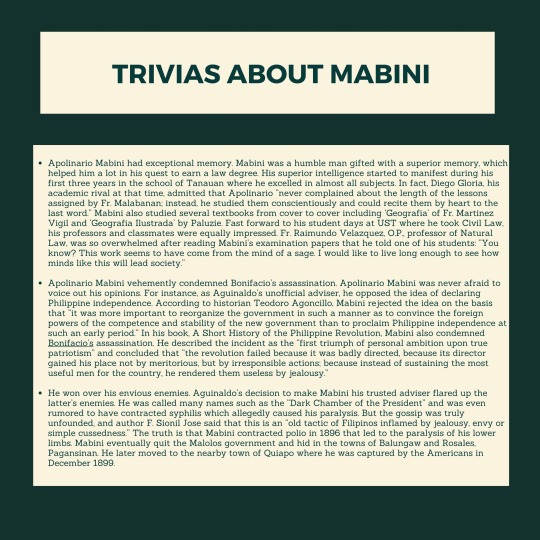
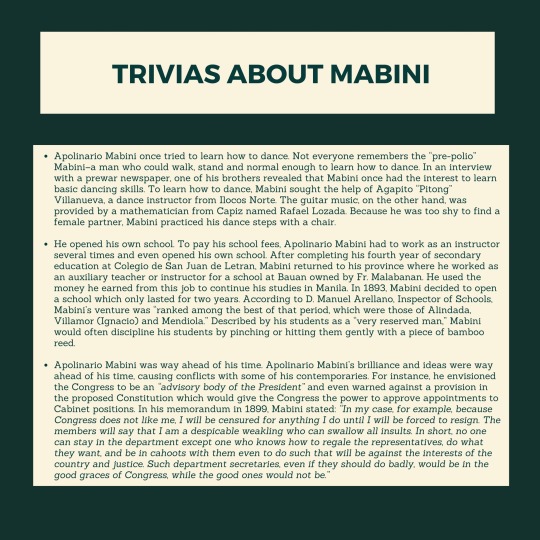
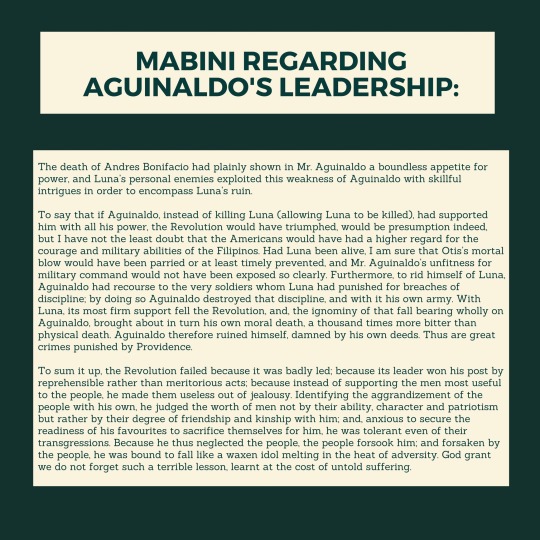

Apolinario Mabini, the stellar individual who was also called as the Brains and Conscience of the Philippine Revolution. Known for his extraordinary intellect, political prowess, and rhetoric, Mabini's efforts and ideas on governance impacted the Philippines' fight for independence throughout the following century, despite his tragic death in 1903. Mabini was born into a peasant family and attended Colegio de San Juan de Letran College in Manila before graduating with a law degree from the University of Santo Tomás in 1894. In August 1896, during a nationalist insurgency, he joined the armies of General Emilio Aguinaldo and frequently became his right-hand man. When the Spanish-American War began in 1898, Mabini proposed an alliance with the United States as a method to gain independence from Spain. Mabini was able to address Aguinaldo from the Philippines, who governed as an autocrat, on July 23, 1898. He compelled the new president to establish a revolutionary administration based on a convention rather than a dictatorship. An independent republic was declared with Aguinaldo as its president during a convention conducted in the market town of Malolos in September and October 1898; Mabini drafted its constitution, which paralleled that of the United States. When the US decided to conquer the Philippines, Mabini joined Aguinaldo in renewing the battle for independence. After refusing to swear allegiance to the United States, he was captured by US soldiers in December 1899 and exiled to Guam. He wasn't allowed to come home until a few months before he died. Finally, while in exile in Guam from 1901 to 1903, Mabini wrote La Revolucion Filipina, a memoir in which he criticized Aguinaldo's leadership and pointed out flaws in the Revolution. He returned to Manila in 1903 but died of cholera a few months later at 38 years old. Mabini's wisdom and pragmatism should not be misinterpreted as defeatism; rather, they reflect his unwavering trust in the nation. He validated that the Philippines had always been a country. Regardless of sovereignty or republic conferred by conquerors; it had constructed a true nation through battles and sacrifices. And it was only natural to have a legitimate government with powerful democratic institutions. Mabini understood that success was inescapable.
References:
Apolinario Mabini | Filipino political leader. (n.d.). Encyclopedia Britannica. Retrieved September 26, 2021, from https://www.britannica.com/biography/Apolinario-Mabini
La Revolucion Filipina Apolinario Mabini Pdf. (n.d.). Stealthever. Retrieved September 26, 2021, from https://stealthever.weebly.com/la-revolucion-filipina-apolinario-mabini-pdf.html
#ColegiodeSanJuandeLetran #LetranAlumni #NotableLetranAlumniThroughoutTheYears #Arriba #Letranite #ApolinarioMabini
8 notes
·
View notes
Text
INTRAMUROS, MANILA
"tunog ng kabayo'y naririnig pagpatak ng alas dose ng gabi,
madaming nagsasabi na may mga engkanto sa parteng ito ng Kamaynilaan.
ngunit, kaiba ito sa mga nakwekwento at bulung bulongan.
"tunog kabayo, malaki, ngunit bakit apat ang paa?
kulay iti-" at biglang naputol ang salita sa telepono
"Maliksi, mukang may haharapin ka. Carpio, pakihanda ang antiparang nabili sa Quiapo. ikaw ang titingin." saad ni Aya
"Keith, pakiwari ko may kinalaman ang mga Dalaketnon ngayon. pakitiyak sa bandang Colegio de San Juan de Letran.
"Sige, Tinganan ko na rin sa bandang Palacio del Gobernador"
2 notes
·
View notes
Photo

TEACHERS, NEW NOBLE HEROES.
Iba’t iba ang naging epekto ng mga pagbabagong hatid ng pandemya sa edukasyon sa bawat isa guro ka man o mag-aaral, iba iba rin ang nagiging kahalagahan nito sa ating buhay. Nagkaroon ako ng pagkakataon na makapanayam ang isa sa mga guro sa Kolehiyo sa Air Link International Aviation College , Si G.Charlie Delfin, sa kanyang pansariling pananaw ukol sa epekto ng mga pagbabagong hatid ng pandemya.
____________________________________________________________________________________________________________________________
Si G. Charlie C. Delfin ay isang guro sa Kagawaran ng Agham Panlipunan ng Air Link International Aviation College. Humahawak siya ng mga kurso sa Agham Panlipunan. Ang kanyang karera sa pagtuturo ay nagsimula noong 2002. Dati ay nagturo siya sa University of Fatima – Valenuela sa ilalim ng Kagawaran ng Agham Panlipunan partikular ang Kasaysayan ng Pilipinas, Mga Pag-aaral sa Asya, Kasaysayan sa Daigdig, Relihiyon, Pag-unawa sa Kultura, Lipunan at Pulitika, at Community Solidarity and Citizenship; Capuchin Franciscan Spiritual.Gayundin, pinahusay ng kanyang karanasan sa Adamson University ang kanyang kasanayan sa pagtuturo kung saan nagturo siya ng mga kurso sa Pananaliksik sa Senior High School, Psychology sa Kolehiyo. Siya ay isang tagapagtaguyod ng Kalusugang Mental kung saan nagbibigay siya ng mga payo. Aktibo rin siya sa adbokasiya sa lipunan kung saan nagbigay siya ng panayam sa Correctional Institution for Women (Mandaluyong) at National Bilibid Prison (Muntinlupa). Siya ay bahagi ng pangkat ng pagtuturo ng UNI-THREE churches, isang online ministry sa Youtube at Facebook. Si G. Delfin ay isang alumnus ng Colegio de San Juan de Letran na may kursong, Bachelor of Science Psychology, at Center for Biblikal Studies - Institute & Seminary, Bachelor of Theology. Kasalukuyan siyang nag-aaral sa kanyang master’s degree sa Divinity major in Biblical Studies at Asian Theological Seminary sa Quezon, City.
Sa kung paano pa lang ipinakilala ang aking nakapanayam ay talaga nga namang isa siyang masipag na guro sa labas at loob ng apat na sulok ng paaralan. Ngunit ano nga ba ang dulot ng pandemya sa kanya bilang isang guro at ano ang kaniyang mga pinagkakaabalahan bilang isang indibwal sa labas ng paaralan?
Nang tanungin siya kung ano ang mga pinagkakaabalahan niya ngayon at ang paraan para alagaan ang sarili niya, aniya’y “Hindi ko binago ang routine ko. Bago pa ang pandemic, yung mga ginagawa ko parehas pa rin. Halimbawa, tulog kasi iniiwasan ko na masira ang body clock ko.” Bilang isang guro, mahalaga nga naman na kompleto ang iyong tulog para makapag patuloy ka sa buong araw. Dagdag pa nito, “May mga routine din ako na kailangan gawin na hindi puwedeng matigil tulad ng paglinis ng sasakyan, paglalaba, paglilinis ng kwarto,exercise na hindi puwedeng mawala.” Ang isang guro ay may iba pang responsibilidad maliban sa pagtuturo at ito ay ang alagaan ang kanilang mga sarili mapa pisikal man o mental kaya ayon sakaniya, “Isang beses lang ako nanunood ng balita dahil ayokong masira ang lagay ng aking loob dahil minsan kasi naapektuhan tayo ng mga negatibong balita” Kaya isa raw sa mga advice niya sa sarili niya at sa ibang tao ay “iwasan nag patuloy na pagnuod ng mga balita at isang oras bago matulog, iwasan ang pag gamit ng gadget para di masira ang tulog at ang paraan para ingatan ang sarili ko” Isa din sa mga routine niya ay ang maligo, dahil nakakawala raw ito ng stress. Talaga nga namang nakakastress ang pagtuturo ng maraming estudyante araw-araw at mas nakakadagdag stress kung hindi pa mapapangalagaan ang sarili.
Mahalaga din sa isang guro ang oras para sa sarili para madiskubre pa lalo ang mga iba pang hilig na maaring magamit sa pang araw-araw na pamumuhay at may mga dating gawi din na nawala magmula ng dumating ang pandemya kaya naman ng tanungin siya kung ano ang mga gawi na nawala sa kaniya ngayon, aniya’y “Yung nagigising ka ng 3 am o kaya 4 para umalis ng maaga para pumasok sa klase at magturo, yung travel time noon papunta sa school ay nagagamit ko pa sa pagtulog ngayon” Sambit pa niya, “Ang habit na naestablish ko ay ang reading habit dahil noon, kauti lang ang oras ko magbasa at ito yung isang tinulong sakin ng pandemya.” Naibahagi din ni G.Delfin ang mga librong binabasa niya. Ang mga librong ito ay ang mga libro na may koneksyon sa Interpretation of Book of Revelation sa Bible dahil ayon sakaniya, may kinalaman ang mga binabasa niya sa end of days. Ang mga librong binabasa niya ang nagbigay sakaniya ng paniniwala na mas manalig sa Diyos. Dahil ika nito, “Kung maraming takot, yung takot ko hindi sobra dahil parang normal lang ito na mangyayari at ang lahat ay nangyayari dahil may rason sa likod nito”. Nakahiligan niya rin ang pag nood ng mga psychological documentaries dahil dito niya mas nakikilala ang realidad ng mga tao.Dahil ika nga niya “Mas gusto kong makipag-usap sa mga totoong tao, yung mga taong open sa pagkukwento. Nakikita mo kasi yung mga taong genuine talaga” Maliban pa dito, Isang habit pa raw na ginagawa niya ay ang mag damo at mag tanim. Ngunit ng aking biruin kung siya ba ay isa ng “Plantito” Sambit nito ay “hindi pa.” dahil mahilig lang siyang mag bunot ng mga damo at magtanim ng kung anu-ano.
Kung ang masayang parte ng pandemya ay ang mas malalim na pagkilala sa sarili at pagtuklas ng mga bagay na hindi inaakalang magagawa noon, ang pinaka malungkot na bahagi naman daw ng pandemya ayon kay G.Delfin ay “Hindi kami nakauwi sa probinsya para sa selebrasyon ng 50th golden anniversary ng magulang ko. Pinaghandaan ko yun dahil gusto kong makita yung magulang ko na magkaroon ng re-commitment. Ngunit dahil sa pandemya, naging mahirap ang makauwi sa probinsya.” Gayon pa man, naging madali pa rin ang buhay sa pandemya ayon sakaniya, “Mas nagkaroon ng family time,sabay kami kumakain nung asawa ko ayun yung pinaka blessing at naging mas maluwag ang mga gawain ko na nagagamit ko ang oras ko kasama ang kaibigan ko na parang ayaw ko na bumalik sa normal dahil nakasanayan na” Totoo nga naman mahirap na ibalik ang mga bagay na nakasanayan na dahil halos mag iisang taon na rin ang lahat sa sitwasyong ganito.
Nang tanungin naman kung may problema na maaari niyang maresolba at ano ito, ang sabi niya’y “Ako dalawa, Una one is for the world, na magkaroon ng restoration.We will be able to overcome yung pandemic na mabalik ang lahat sa normal at pangalawa, for people to realize what is the most valuable thing in life.” Ayon pa sa kaniya alam niya na imposibleng marelbohan niya ang crisis na ito kaya naman ito daw ay isang “Wishful thinking” lamang. Dagdag pa nito, “Meron pang mas valuable sa materyal na bagay at sa kalusugan natin at ito ay ang relasyon natin sa Panginoon.” Tunay nga naman na ang relasyon sa nasa itaas ang pinaka mahalagang bagay ngayon na dapat ay meron ang bawat isa. Bukod pa rito, tinanong din siya kung ano ang nagbibigay pag-asa sa kanya ngayon. Sambit nito’y, “Mas tinitignan ko lagi na may katapusan siya, sa common language ng tao, may purpose lahat ng bagay. At para sakin, God is teaching something sa ating generation.” “I find it so previlage na nabuhay ako na naranasan ko ang pandemic dahil dati, nababasa ko lang yung spanish flu, black lung noong 17th century at naiimagine ko how people would survive, pero nung naexperience ko siya mas lumalim ang kahulugan sakin ng buhay at yung spirituality ko mas tumibay at iyon ang nagbibigay sakin ng hope, na lahat ng ito ay may magandang kalalabasan sa mga susunod na taon.” Dagdag pa nito. Sa ating mga pinagdaanan, may mga bagay tayong natutunan at ayon kay G.Delfin, ang take away niya daw sa pangyayaring ito ay “To enjoy life pagdating sa relasyon sa Panginoon at relasyon sa pamilya at kaibigan” Dahil noong nagsimula ang pandemya tila lahat daw ay nagreconnect. Isa pa ay ang maging handa sa mga bagay maaring mangyari na gusto niya din ituro sa iba. At kung may mensahe siyang ibabahagi para sa mga taong dumaranas ng parehong bagay na pinagdaanan niya sa quarantine na ito ika niya’y, “May mga bagay sa buhay na di natin kontrolado kaya kung may mga bagay na dumadating, kailangan natin siyang tanggapin at iadapt dahil hindi na natin siya maaring ibalik ang nakaraan bago mangyari ang pandemyang ito.” Sabi nga niya, kailangan natin na maging handa sa mga bagay na may posibilidad na mangyari ng biglaan. Sa buhay talaga maraming bagay na maaring mangyari na hindi natin namamalayan. Ika nga niya, “Hindi puwedeng matigil ang buhay natin dahil may pandemic” “Always value your relationship with family and God dahil hindi mo alam ang puwedeng mangyari” Dagdag pa nito.
Ang pagiging isang guro sa ilalim ng isang pandemya ay napakahirap. Hindi lamang estudyante ang nahihirapan sa ganitong sitwasyon kaya naman ng tanungin siya kung ano ang pakiramdam ng pagiging isang guro sa panahon ng pandemya, sambit nito’y “Ang pinaka mahirap ay yung hindi ka makaestablish ng authorithy dahil walang eye contact, mahirap magtiwala sa estudyante dahil marami ang nagsisinungaling.” Isa sa problema sa paraan ng pag-aaral ngayon ay ang pag-access sa internet, o kaya naman ay ang paghahanap ng signal. Ngunit ang ibang estudyante ay ginagawa nalang itong dahilan upang hindi makapasok sa klase kaya naman para kay G.Delfin, isa ito sa pinaka mahirap. “Minsan may parents pa nagrereklamo” Dagdag pa nito.
Natural sa mga guro ang maging mapagbigay at maunawain sa mga estudyante at isa si G.Delfin sa mga ito dahil ayon sakaniya, “Maraming estudyante na hindi nila alam na binibigyan sila ng bonus. Lahat ng estudyante binibigyan ko ng bonus dahil kailangan kapag may hinila ako sa baba, hindi puwedeng yung nasa taas maiiwan.” “Yung assesment, mahirap din. Kasi how can we determine if our students are honest? Yun ang pinaka challenging na part bilang isang teacher.” Minsan pa raw eh kapag may nagpapasa, buong papel ay galing lang sa internet o kaya naman ay kinopya lang sa kaklase at para say G.Delfin, nakakabastos ito hindi lang bilang isang guro kundi bilang isang tao dahil tila pinagmumukhang mangmang ang mga guro sa panahon ng pandemya.
Patuloy na pinapatunayan ni G.Delfin na sa kabila ng lahat ng ito, ang pagkatuto ng mga estudyante ang isa sa pinaka mahalagang bagay kaya naman kahit na sa ganitong sitwasyon ay inaalay niya ang lahat ng kaalaman na maari niyang maibigay sa mga estudyanteng hawak niya na magagamit nila sa pang araw-araw na buhay at naniniwala siya na lahat ng ito ay kaya nating lampasan basta manalig lang sa Tagapagligtas.
1 note
·
View note
Photo

#WithinTheWalls : Colegio de San Juan de Letran, Muralla Street, Intramuros, Manila ⚫⚪ (at The Walled City, Intramuros, Manila)
#bnw#black and white#grey#building#architecture#Walled City#Intramuros#Manila#Letran#Colegio de San Juan de Letran
0 notes
Text
AdSpeak 2017: Letran and Ad Foundation Team-Up; promotes Values Formation in Advertisements
Colegio de San Juan de Letran, in partnership with the Advertising Foundation of the Philippines, will convene delegates from various schools when it holds AdSpeak ‘17, a student convention on values advertising. Letran and the Ad Foundation are co-presenting AdSpeak ’17 since they share the same goal of promoting values and worthwhile advocacies in advertisements.
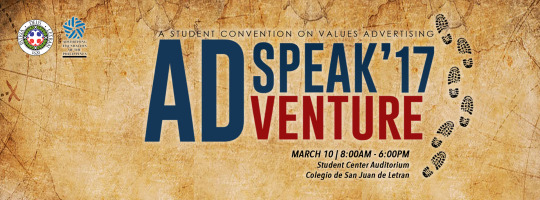
The event, which will take place on March 10, will be held at the Student Center Auditorium of Colegio de San Juan de Letran in Intramuros, Manila. Admission is free on a first-come, first-served basis.
AdSpeak ’17 aims to impress on future communicators the importance of advertising with positive values. Advertising experts will share their insights during the whole-day affair. Among them are Melvin Mangada, Partner & Chief Creative Officer, TBWA\Santiago Mangada Puno; Titus Arce, Managing Director, Dentsu Jayme Syfu; Alan Fontanilla, Managing Director, MullenLowe Open Phils.; Maya Ambalada-Roldan, Business Unit Director, Y&R Phils.; Paolo de Leon, Creative Director, Aspac/Dentsu Aegis Network; Jethro Adriano, Chief Creative Officer, Project Junkie; and Paolo Agulto, Creative Group Head, DDB Singapore.
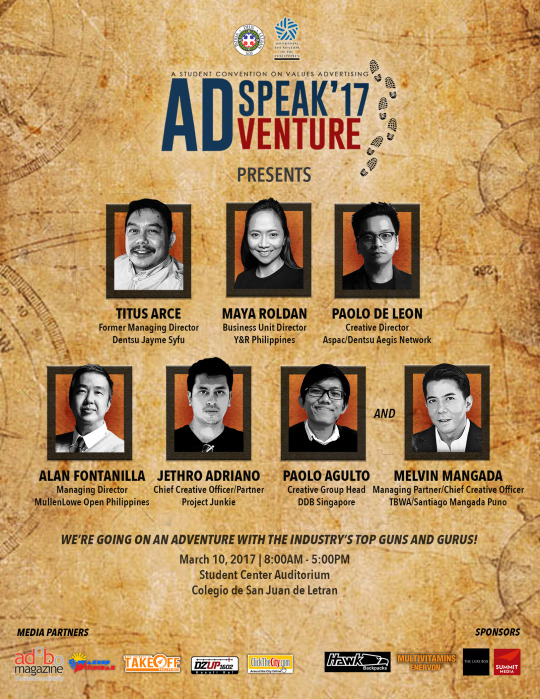
Aside from talks from resource speakers, AdSpeak ’17 will mount its Values Advertising Awards, Students’ Choice Awards and Online Choice Awards. Commercials that uphold values have been created and entered by student delegates in six categories: Print, Radio, TV, Campaign, Digital and Brand Communications.
The AdSpeak ’17 student convention is sponsored by Enervon Multivitamins, The Linden Suites, Hawk Bags, The Luxe Box, Greenwich, URC, Mark Fragrances, The Soap Spot, Summit Media, DZUP, WazzupPilipinas, Take Off PH, Click the City and Adobo Magazine.
Check out the Official page of AdSpeak 2017 here.
For more Daily Dose Of Eyegasmic Occurrences follow our Social Media Accounts:
Facebook Fan Page: https://www.facebook.com/TakeOffPHBlog
Instagram: @takeoff_ph | Twitter: @takeoff_ph
#takeoffph#adspeak 2017#Colegio de San Juan de Letran#letran#philippines#student convention#convention#Advertising Foundation of the Philippines#social event#onthescene
0 notes
Photo


Monument of Jose Rizal
At the second tour in their third day, at exactly 10:00 am in the morning, the students are fully ready to go the “Most popular, most visited, most guarded and most photographed monument” is the Monument of Jose Rizal in Luneta. Incase everyone is not aware, The original title of Rizal Monument is Motto Stella) or “guiding star” Given by its designer Swiss sculptor, Richard Kissling.
At 11:30 am in the morning, the students arrived at Luneta Park and discussed about Rizal have died fighting for the freedom of the Philippines. Jose Rizal is our national hero. A lot of people in the other parts of the world admired him.
Jose Rizal’s Monument is not only built with the precious metal and stone, but his house also remains. The students of Colegio De San Juan De Letran know how to give an honor and respect to this important landmark in the Philippines
The students observing the Monument they notice it is composed of a standing bronze sculpture of Rizal, with an obelisk as his backdrop, set on a granite stone base which his remains are interred inside. The students also notice how high this monument is, the height of the monument is 12.7 meters or 42 feet.
Next to it, the students observe the monument in Luneta portrays Rizal in overcoat holding a book that represents his novels Noli Me Tángere and El filibusterismo. The obelisk is commonly understood as Rizal’s masonic background while the three stars stand for Luzon, Visayas and Mindanao.
At 1:00 am in the afternoon, the students ended their second destination for third day and they are getting ready for their next destination
1 note
·
View note
Text
NCAA Player of the Week Fran Yu helps Knights regain their bearing
NCAA Player of the Week Fran Yu helps Knights regain their bearing
Philstar.com October 24, 2022 | 12:12pm MANILA, Philippines – After a shaky start to its three-peat drive, Colegio de San Juan de Letran has now ascended to solo second spot in the NCAA Season 98 all thanks to Fran Yu, whose quickness and leadership brought the Knights back on track. Letran absorbed three tough losses against Arellano, surprise contender Lyceum, and rival San Beda as the…

View On WordPress
0 notes